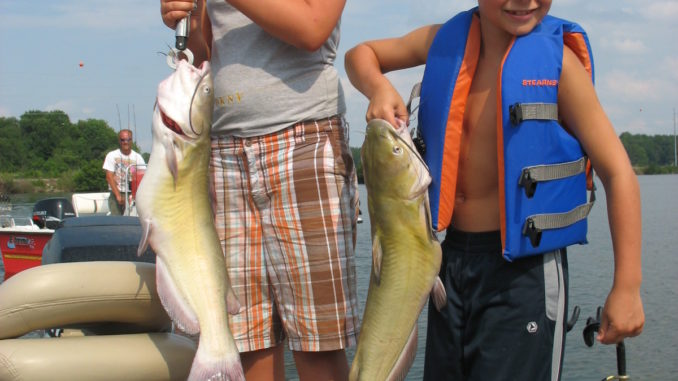
High Rock Lake produces plenty of quality July cats
Maynard Edwards, a retired fishing guide from Lexington, N.C, was known for “strolling” — aka slow-trolling — for channel catfish on High Rock Lake. He said most fishermen can enhance their catches by taking a piscatorial stroll.
“There’s more to catfishing than chucking out some cut bait and hoping for the best,” Edwards said. “Over the years, I’ve refined a trolling technique — right down to the weight and hook — that’s designed to catch channel cats.”
For strolling, Edwards sets out six medium-heavy, 7-foot fiberglass rods with flexible tips.
“The rod tip needs to give a little when a cat strikes or you’ll tear the hook out of its mouth upon setting the hook,” he said. “Channel cats usually set the hook upon striking, but many fishermen can’t resist flexing their muscles and striking back.”
The rods are mounted at the stern of his boat, with two at the corners opposite one another, pointed out at angles.
“I cast to let the lines out and stagger my casts, with each cast being at different distances to prevent tangles while strolling,” Edwards said. “The corner rods hold planner boards for probing shallow water. The other rods employ Santee rigs, which are basically Carolina rigs with an in-line float on the line about 3 to 6 inches above the hook to keep the baits off the bottom.”
Edwards uses Browning baitcasting reels filled with 20- to 25-pound monofilament; He dislikes fluorocarbon because its tendency to sink makes snagging more likely.
With planer boards, he favors No. 8/0 circle hooks so fish will hook themselves.
“There’s too much slack to set the hook with a planer board,” said Edwards, who uses No 5/0 to 6/0 Kahle hooks with the Santee rigs, running the hook through the eyes or backs of cut shad, depending upon which segment of the bait he’s using.
“I use the head and middle section of a 6-inch gizzard shad — not the tail portion, because it twists the line,” said Edwards, whose rig features a homemade sinker that’s virtually snag-proof.
In July, Edwards strolls the backs of creeks and the river section of High Rock in 3 to 5 feet of water, gradually moving to flats and humps off the main river or major creeks in 12 to 16 feet of water until he gets bites.
During a 5-hour guide trip, Edwards said his clients catch about 20 channel cats, with most ranging from 3 to 4 pounds. Fish from 6 to 8 pounds are plentiful with trophy cats weighing 10 to 12 pounds a possibility.
“The fishing for channel cats gets better every year,” he said.



